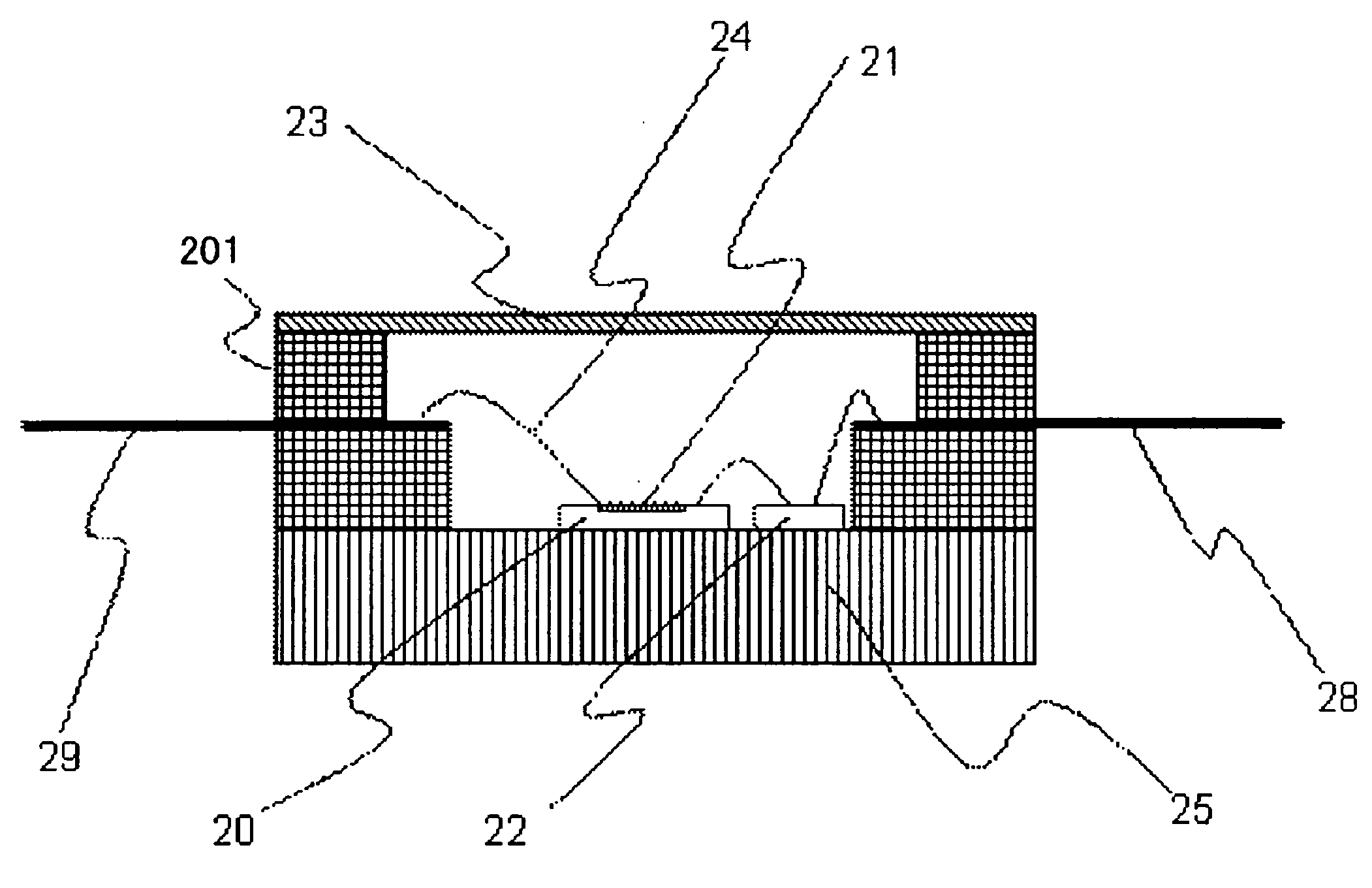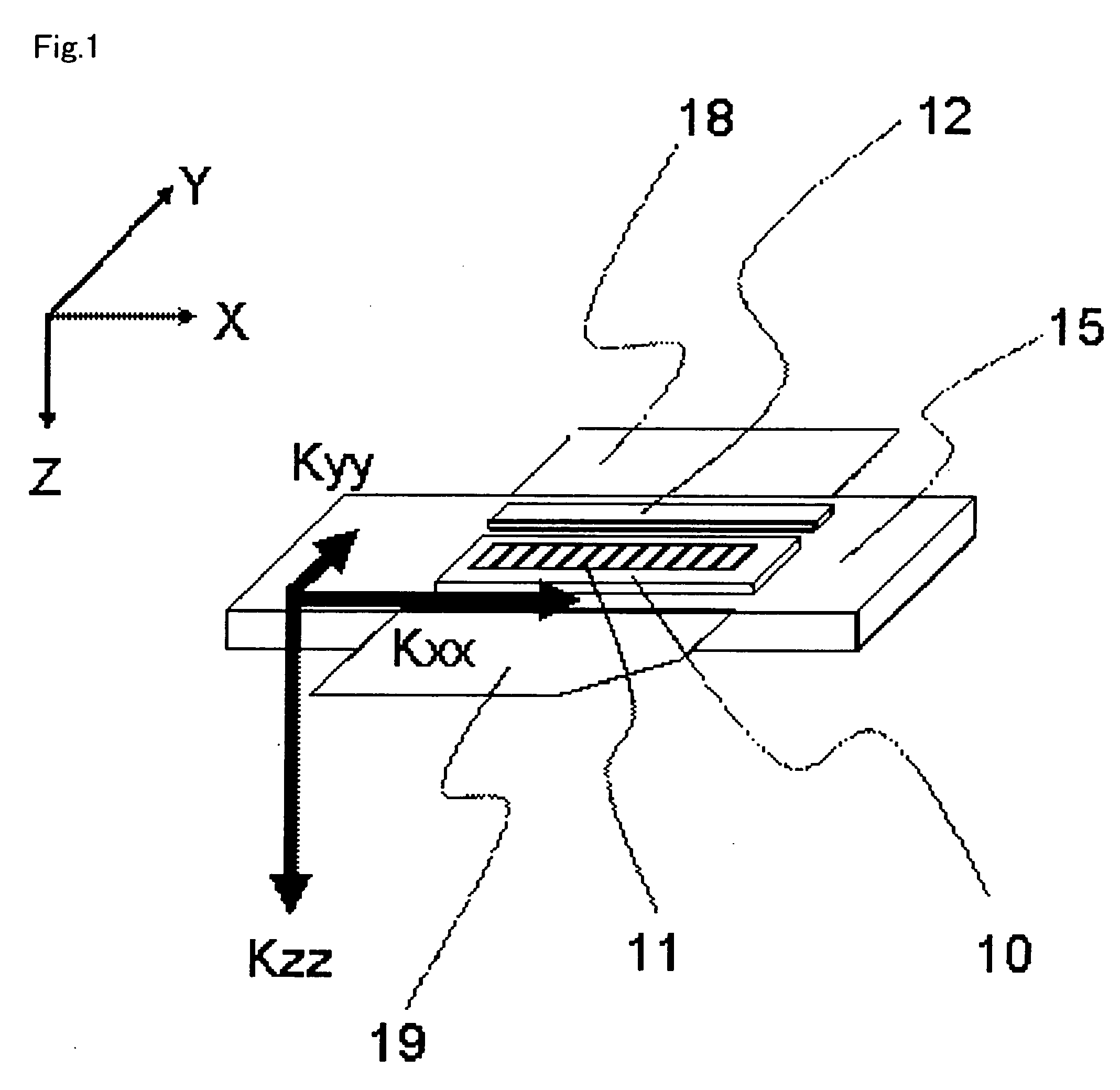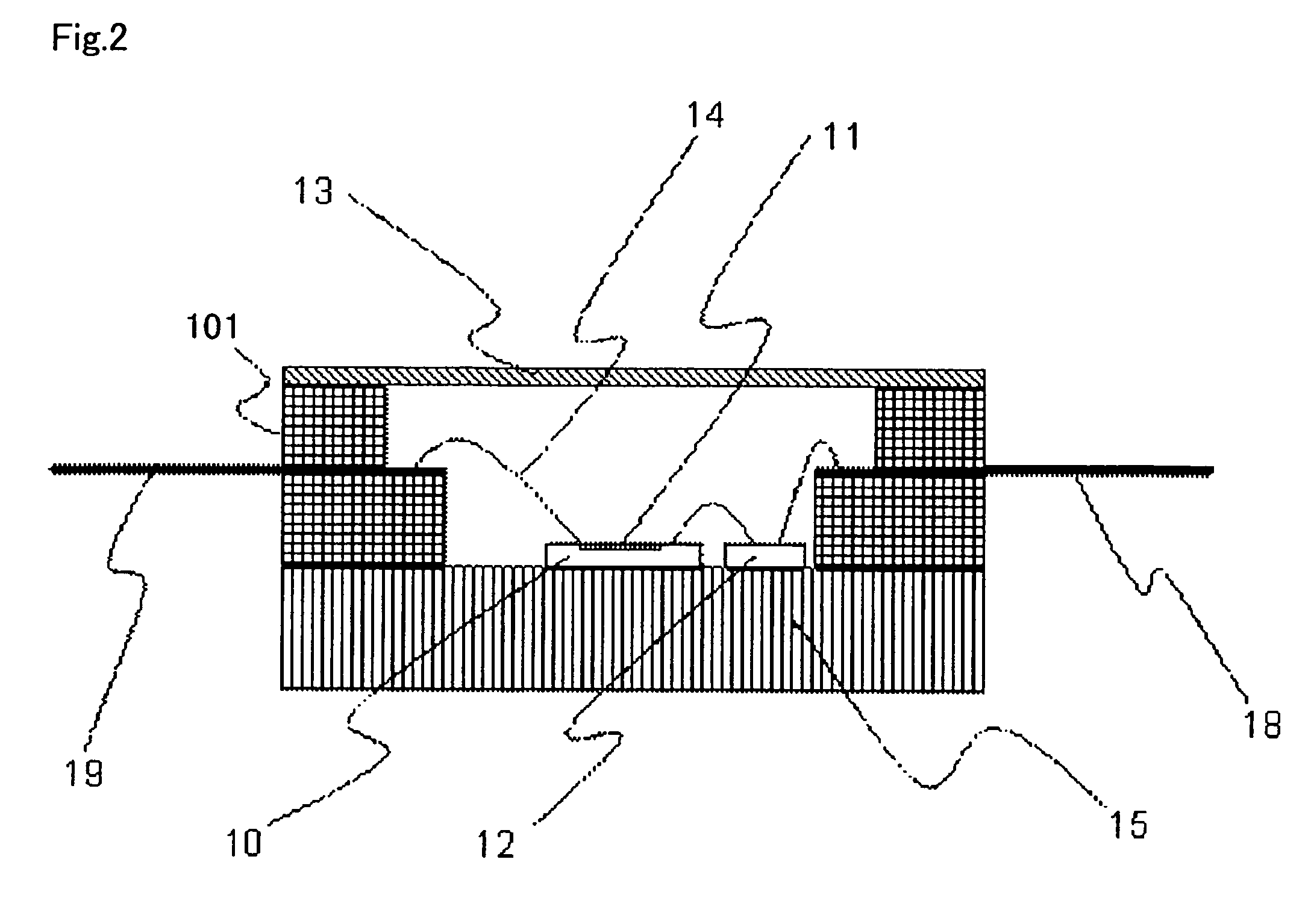Semiconductor device
a technology of semiconductors and devices, applied in semiconductor devices, semiconductor/solid-state device details, electrical apparatus, etc., can solve the problems of deterioration in reliability, insufficient channel temperature, and harmful influence on long-term reliability of fet, so as to reduce the thickness of the first heat sink section, increase the thermal resistance, and increase the heat spread effect
- Summary
- Abstract
- Description
- Claims
- Application Information
AI Technical Summary
Benefits of technology
Problems solved by technology
Method used
Image
Examples
first embodiment
[0065]FIG. 1 is a schematic perspective view of a semiconductor device illustrating first embodiment of the present invention, and FIG. 2 and FIG. 3 are schematic cross-sectional views of semiconductor elements having rectangular two-dimensional geometry in a central section of the semiconductor element, along Y direction, which is equivalent to the short side direction. The details of the respective materials are not presented in the figures, and only sections necessary for describing the feature of the present invention are extracted to be illustrated. In FIG. 1 to FIG. 3, 10 indicates a semiconductor element, 11 indicates a region for heat generated by the semiconductor element, 12 indicates a matching circuit substrate, 13 indicates a lid of a package, 14 indicates a gold wire, and 15 indicates a heat sink section. The semiconductor element 10 has a rectangular two-dimensional geometry, and serves as a heat source. Further, in FIG. 3, copper (Cu) thin layers 151 (metallic layer)...
second embodiment
[0072]FIG. 4 is a schematic perspective view of a semiconductor device illustrating second embodiment of the present invention, and FIG. 5 and FIG. 6 are schematic cross-sectional views of semiconductor elements having rectangular two-dimensional geometry in a central section of the semiconductor element, along Y direction, which is equivalent to the short side direction. The details of the respective materials are not presented in the figures, and only sections necessary for describing the feature of the present invention are extracted to be illustrated. In FIG. 4 to FIG. 6, 20 indicates a semiconductor element, 21 indicates a region for heat generated by the semiconductor element, 22 indicates a matching circuit substrate, 23 indicates a lid of a package, 24 indicates a gold wire, and 25 indicates a heat sink section. The semiconductor element 20 has a rectangular two-dimensional geometry, and serves as a heat source. Further, in FIG. 6, copper (Cu) thin layers 251 (metallic layer...
third embodiment
[0082]FIG. 7 is a schematic perspective view of a semiconductor device illustrating third embodiment of the present invention, and
[0083]FIG. 8 and FIG. 9 are schematic cross-sectional views of semiconductor elements having rectangular two-dimensional geometry, along Y direction, which is equivalent to the short side direction.
[0084]The details of the respective materials are not presented in the figures, and only sections necessary for describing the feature of the present invention are extracted to be illustrated. In FIG. 7 to FIG. 9, 30 indicates a semiconductor element, 31 indicates a region for heat generated by the semiconductor element, 32 indicates a matching circuit substrate, 33 indicates a lid of a package, 34 indicates a gold wire, 35 indicates a first heat sink section, and 36 indicates a second heat sink section. The first heat sink section 36 is provided right under the heat source, and the second heat sink section 37 is provided around the above-described first heat s...
PUM
 Login to View More
Login to View More Abstract
Description
Claims
Application Information
 Login to View More
Login to View More - R&D
- Intellectual Property
- Life Sciences
- Materials
- Tech Scout
- Unparalleled Data Quality
- Higher Quality Content
- 60% Fewer Hallucinations
Browse by: Latest US Patents, China's latest patents, Technical Efficacy Thesaurus, Application Domain, Technology Topic, Popular Technical Reports.
© 2025 PatSnap. All rights reserved.Legal|Privacy policy|Modern Slavery Act Transparency Statement|Sitemap|About US| Contact US: help@patsnap.com



